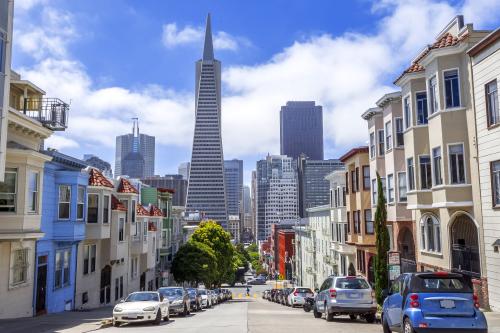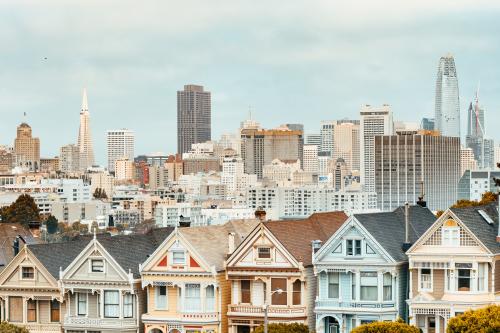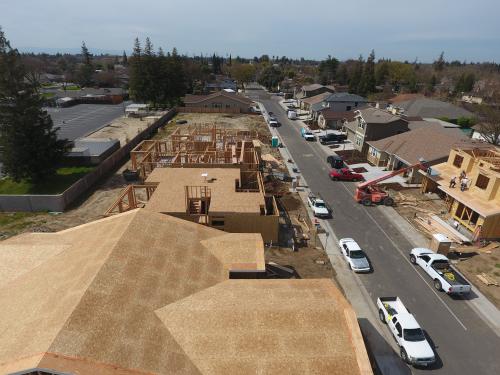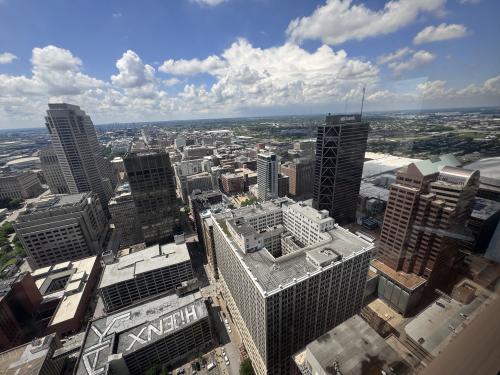Like many large metropolitan areas, the Washington D.C. region faces a housing supply crunch. From 2010 to 2016, the population grew roughly twice as fast as the number of housing units, according to Census Bureau data. Basic economics tells us that when demand increases and the quantity of supply does not keep up, prices have to rise. And indeed they have: median home values increased by about five percent annually during that time, and median rents increased by more than two percent annually. But citywide numbers conceal wide variation in neighborhood housing markets. Some of the District’s neighborhoods have seen construction booms with thousands of newly built high-rise apartments and condominiums, while other neighborhoods have added virtually no housing in several decades.
In this article, I explore where new housing construction and home renovations occurred across District neighborhoods from 2008 to 2015. Using building permit data from the city’s open data website, I map residential permits for new construction, additions, and alterations. The analysis asks where housing supply expanded – and where supply should have expanded, but didn’t.
Most neighborhoods in the District have built little new housing – with a few key exceptions
Between 2008 and 2015, the District of Columbia issued approximately 1,600 permits for new residential structures containing over 11,000 housing units. About 70 percent of new housing was constructed as large multifamily apartment or condominium buildings (more than 50 units per building). Around 15 percent of new housing units were in buildings with fewer than five units. New construction was highly concentrated in a few neighborhoods (Map 1). More than half of the new units were located in just four of the city’s 40 Advisory Neighborhood Council (ANC) areas, and 80 percent were located in nine ANCs. Some of the areas that saw intense new construction included NoMa, the Southwest Waterfront, Shaw, and Brookland. Nearly one third of the city’s census tracts had no permits for new housing during this time.

Affluent neighborhoods invested in sprucing up and expanding their homes
Permits for housing additions were almost as common as for new construction – but occurred in completely different parts of the city. The type and extent of work conducted under addition permits varied considerably, from putting in an extra bathroom to adding another story on top of a row house (known as a pop-up) or extending the rear footprint of the house (called a bump-out). Addition permits were particularly prevalent in high-income, high-housing price tracts in upper northwest Washington D.C., such as Chevy Chase, Friendship Heights, and the Palisades – areas that built almost no new housing.

Renovating existing buildings is the most common construction activity, and the most geographically dispersed
The District’s housing stock is relatively old: about 36 percent of housing units were constructed before 1940 (for the U.S overall, only 13 percent of homes pre-date 1940). Given the age of housing, many District property owners choose to invest in upgrades and renovations. Similar to addition permits, alteration permits can cover a wide variety of specific activities: renovating kitchens and bathrooms, replacing older doors and windows with more energy-efficient ones, and building outdoor decks are some common renovations. Roughly 29,000 permits were issued for alterations, accounting for nearly 3 in 4 residential building permits during this time.
However, compared with new construction and additions, alterations are more evenly distributed across the District’s neighborhoods. They are particularly frequent in tracts with older, higher-price housing, and higher rates of homeownership: owner-occupants typically invest more in home maintenance, high house values encourage continued maintenance, and older homes require more upkeep.

The District should build new, high density housing in areas with high land values. It hasn’t.
Standard models of urban economics predict that areas with high land values should be densely built: developers should pack as many housing units as possible onto small amounts of valuable land. But housing prices (a proxy for underlying land values) don’t explain which District neighborhoods saw more new construction (Figure 1). Housing values in 2010 are essentially uncorrelated with the amount of new construction that occurred between 2008 and 2015. By contrast, both addition and alteration permits are more common in high-priced neighborhoods, consistent with economic theory.

Concerns for policymakers
The discrepancies between where the District should build new housing and where it did build new housing have important implications for housing affordability in the city.
Wealthy neighborhoods aren’t building their “fair share” of new housing – at any price level.
The District’s most affluent neighborhoods, with some of the most valuable land, simply don’t build new housing. While the concept of “fair share” housing usually focuses on the distribution of affordable (subsidized) housing, it’s worth considering that when developers can’t build luxury housing in affluent neighborhoods, the pent-up demand for high-end homes will spill over into nearby middle-income neighborhoods. Indeed, the neighborhoods that built the most new housing during this period were either moderate income areas along the periphery of high-value places (Shaw, U Street, and 14th Street) or neighborhoods that were previously more commercial or industrial (NoMa, Waterfront, and Navy Yard). Not being allowed to build in wealthy neighborhoods pushes the frontier of gentrification into bordering lower-income areas.
Zoning and politics are distorting housing markets.
One possible explanation for why affluent neighborhoods build so little might be that wealthy residents value their large single-family houses with yards so highly that no developer could profitably purchase their lots and build apartments. Perusing the city’s zoning map suggests an alternate explanation: nearly all of the high-value neighborhoods in the city’s upper northwest quadrant are zoned for low-density, single-family housing. Recent public hearings about updating the city’s Comprehensive Plan to allow higher density development prompted pushback from residents who want to maintain “stability” and “neighborhood character” – essentially freezing the housing stock from a time when underlying land values were lower. Changes to familiar neighborhoods can be unnerving. But the District’s current zoning and politics insulate the city’s wealthy areas from change, while lower-income families struggle to afford ever-increasing rents.
Cecile Murray and Rahee Jung provided excellent research assistance for this article.
The Brookings Institution is committed to quality, independence, and impact.
We are supported by a diverse array of funders. In line with our values and policies, each Brookings publication represents the sole views of its author(s).







Commentary
In whose backyards has D.C. built new housing?
Monday, May 14, 2018